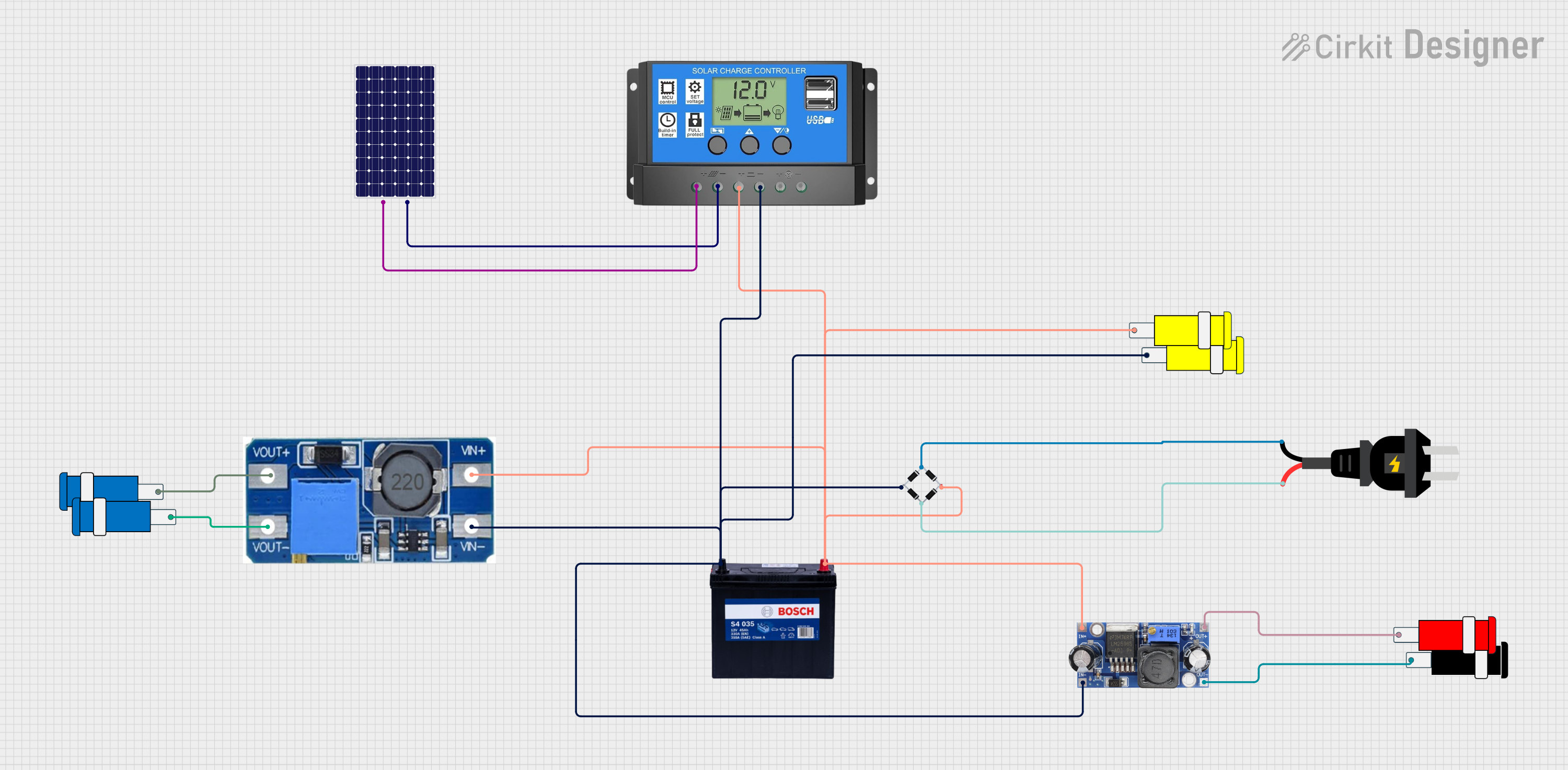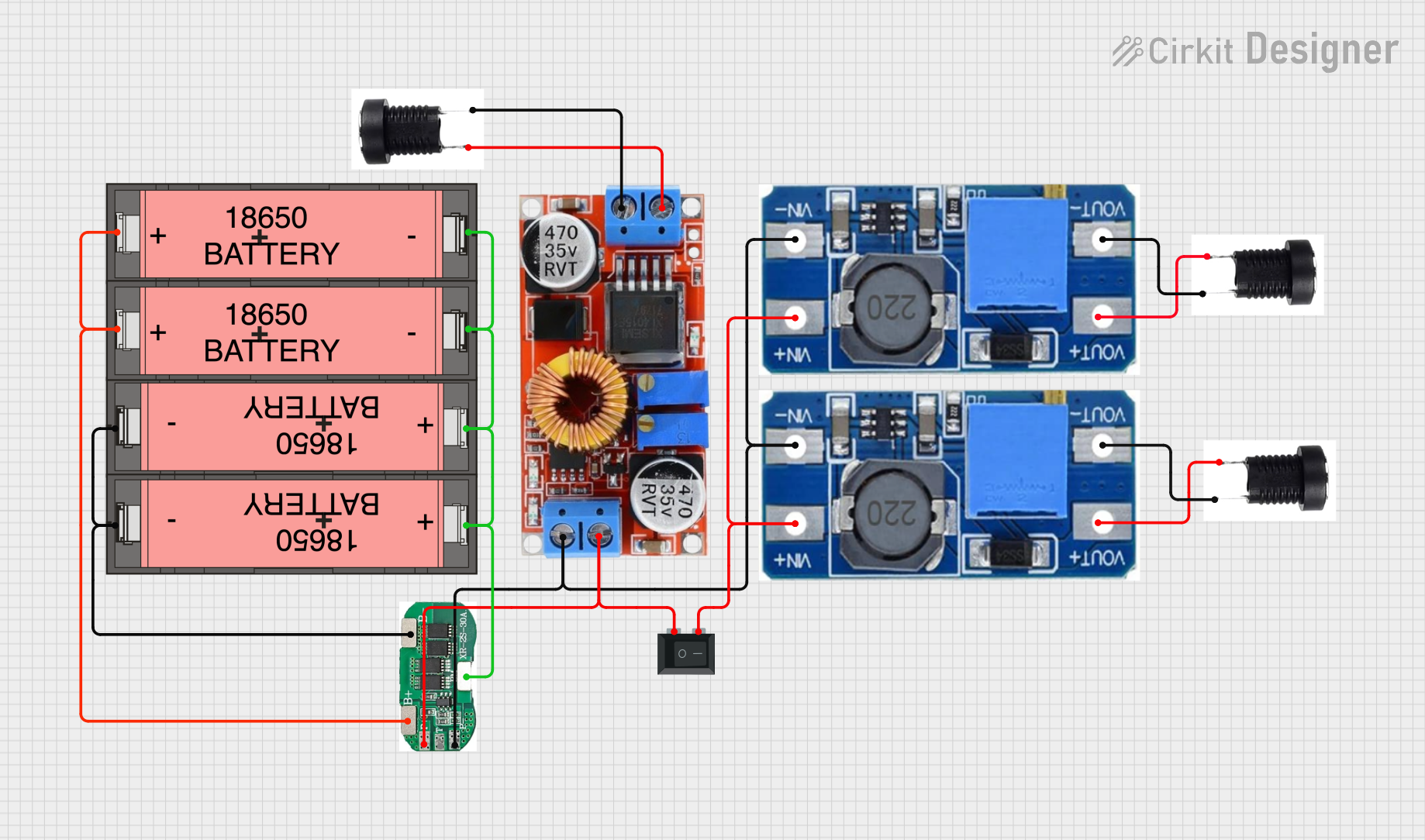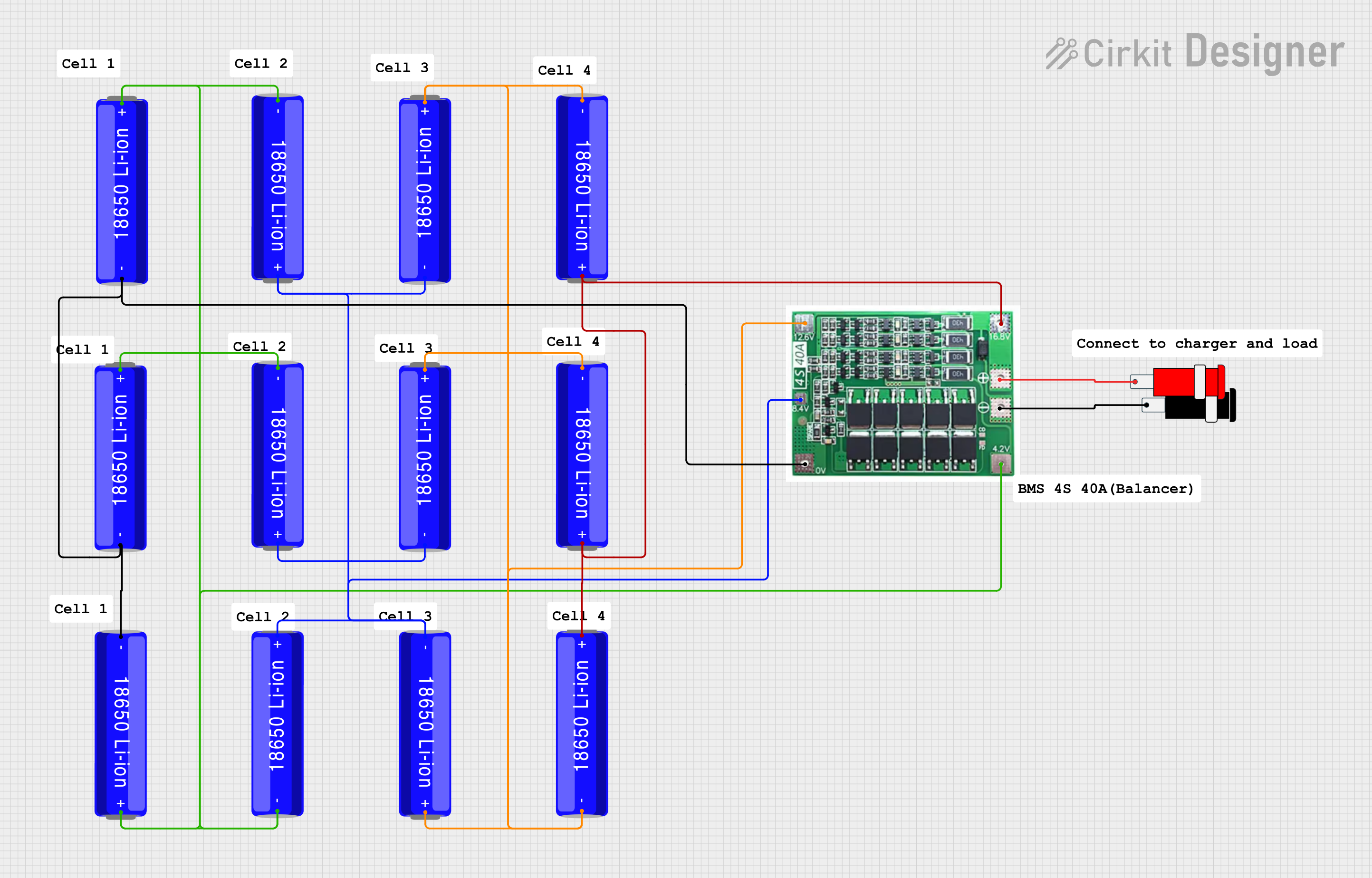
How to Use 22.2V 5Ah battery: Examples, Pinouts, and Specs

 Design with 22.2V 5Ah battery in Cirkit Designer
Design with 22.2V 5Ah battery in Cirkit DesignerIntroduction
The 22.2V 5Ah lithium-ion battery pack is a rechargeable power source designed to deliver a nominal voltage of 22.2 volts and a capacity of 5 ampere-hours. This battery pack is ideal for a variety of applications, including electric vehicles, drones, robotics, and portable electronic devices. Its high energy density and lightweight design make it a popular choice for users seeking efficient and reliable power solutions.
Explore Projects Built with 22.2V 5Ah battery

 Open Project in Cirkit Designer
Open Project in Cirkit Designer
 Open Project in Cirkit Designer
Open Project in Cirkit Designer
 Open Project in Cirkit Designer
Open Project in Cirkit Designer
 Open Project in Cirkit Designer
Open Project in Cirkit DesignerExplore Projects Built with 22.2V 5Ah battery

 Open Project in Cirkit Designer
Open Project in Cirkit Designer
 Open Project in Cirkit Designer
Open Project in Cirkit Designer
 Open Project in Cirkit Designer
Open Project in Cirkit Designer
 Open Project in Cirkit Designer
Open Project in Cirkit DesignerCommon Applications and Use Cases
- Electric Vehicles: Provides power for electric bikes, scooters, and cars.
- Drones: Supplies energy for multirotor and fixed-wing UAVs.
- Robotics: Powers robotic systems and autonomous vehicles.
- Portable Electronics: Used in high-capacity power banks and other devices.
Technical Specifications
Key Technical Details
| Specification | Value |
|---|---|
| Nominal Voltage | 22.2 V |
| Capacity | 5 Ah |
| Chemistry | Lithium-Ion |
| Charge Voltage | 25.2 V |
| Discharge Voltage | 15.0 V |
| Maximum Continuous Discharge Current | 20 A |
| Weight | Approximately 1.5 kg |
| Dimensions | 150 x 100 x 50 mm |
Pin Configuration and Descriptions
| Pin Number | Pin Name | Description |
|---|---|---|
| 1 | Positive (+) | Connects to the positive terminal of the load. |
| 2 | Negative (-) | Connects to the negative terminal of the load. |
Usage Instructions
How to Use the Component in a Circuit
- Connection: Connect the positive terminal of the battery pack to the positive input of your device and the negative terminal to the negative input.
- Charging: Use a compatible lithium-ion charger with a voltage output of 25.2V to charge the battery pack. Ensure the charger has a suitable current rating.
- Discharge: Monitor the discharge voltage to avoid dropping below 15.0V, which can damage the battery.
Important Considerations and Best Practices
- Safety: Always use a battery management system (BMS) to protect against overcharging, over-discharging, and short circuits.
- Storage: Store the battery in a cool, dry place and avoid exposing it to extreme temperatures.
- Maintenance: Regularly check the battery for any signs of damage or swelling. Replace if necessary.
Troubleshooting and FAQs
Common Issues Users Might Face
Battery Not Charging:
- Solution: Check the charger compatibility and connections. Ensure the charger is functioning properly.
Battery Not Discharging:
- Solution: Verify that the load is connected correctly. Check for any blown fuses or circuit issues.
Battery Swelling:
- Solution: Stop using the battery immediately. Swelling indicates potential damage or failure. Dispose of it safely.
Tips for Troubleshooting
- Always use a multimeter to check voltage levels before and after connections.
- Keep a log of charging cycles to monitor battery health over time.
- If unsure about any connections, consult the device's manual or seek expert advice.
Example Code for Arduino UNO
If you are using the 22.2V 5Ah battery pack to power an Arduino UNO, here is a simple code snippet to read a voltage level from a sensor:
// Define the pin for the sensor
const int sensorPin = A0; // Analog pin A0
void setup() {
Serial.begin(9600); // Start serial communication
}
void loop() {
int sensorValue = analogRead(sensorPin); // Read the sensor value
float voltage = sensorValue * (22.2 / 1023.0); // Convert to voltage
Serial.print("Voltage: "); // Print voltage to serial monitor
Serial.println(voltage);
delay(1000); // Wait for 1 second
}
This code reads the voltage from a sensor connected to the Arduino and prints it to the serial monitor. Make sure to adjust the voltage calculation based on your specific sensor and circuit configuration.
By following this documentation, users can effectively utilize the 22.2V 5Ah lithium-ion battery pack in their projects while ensuring safety and efficiency.